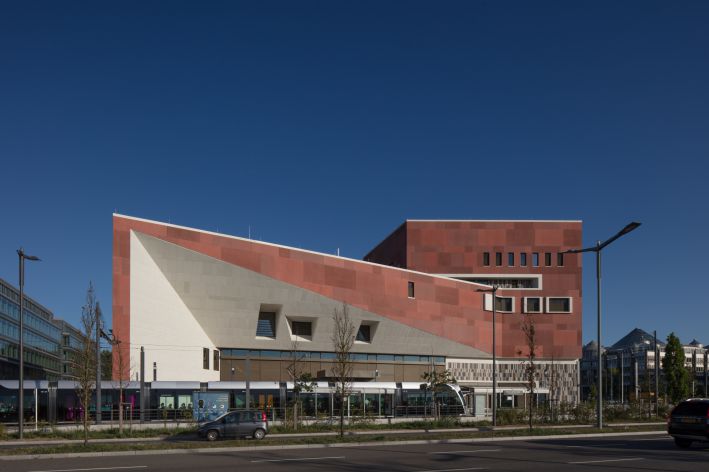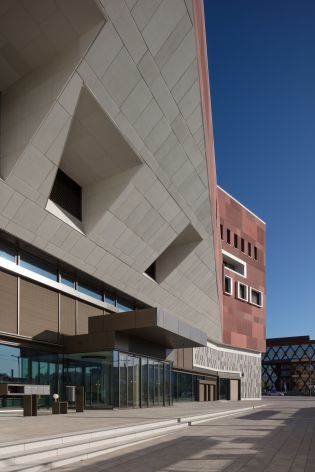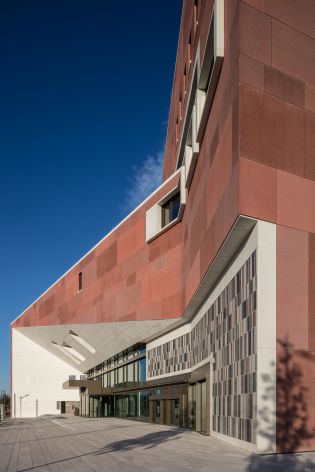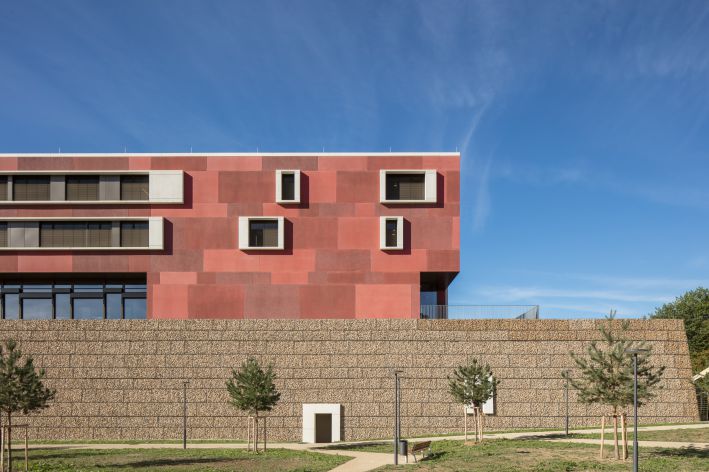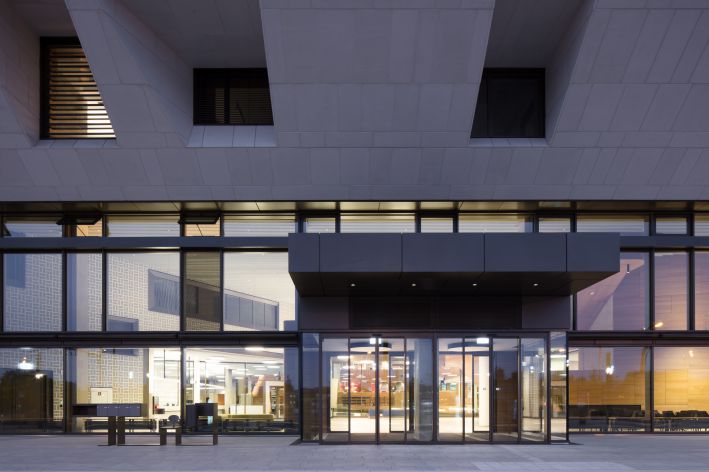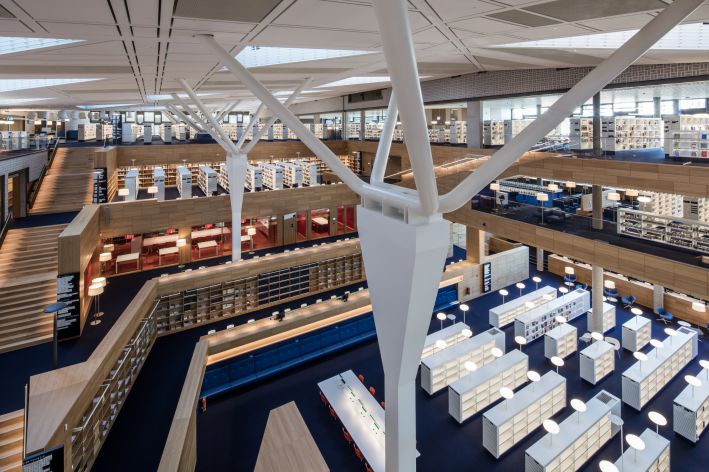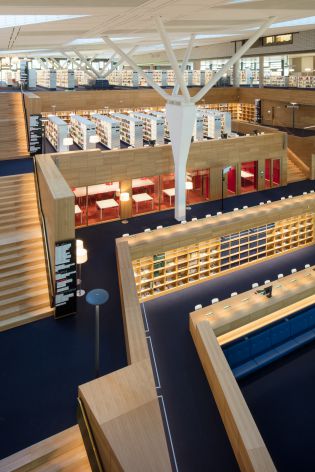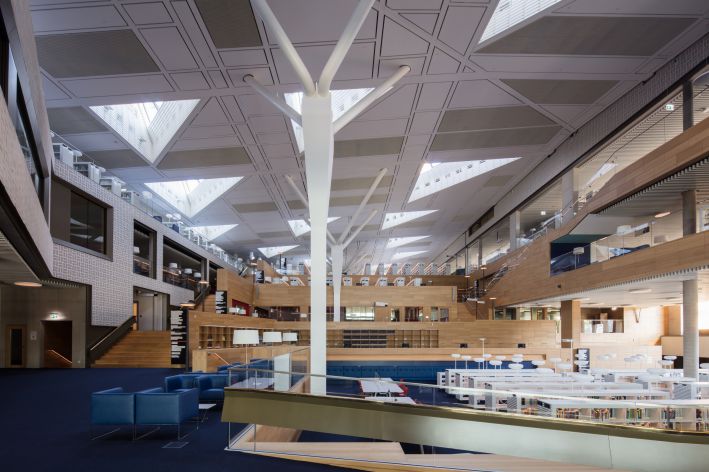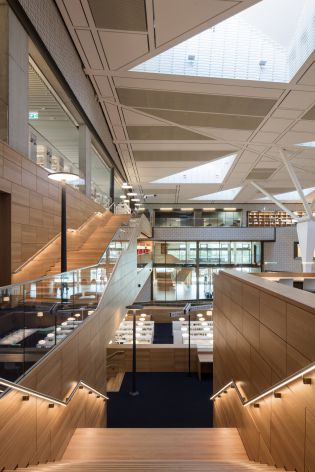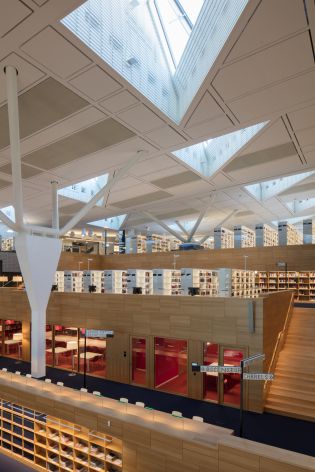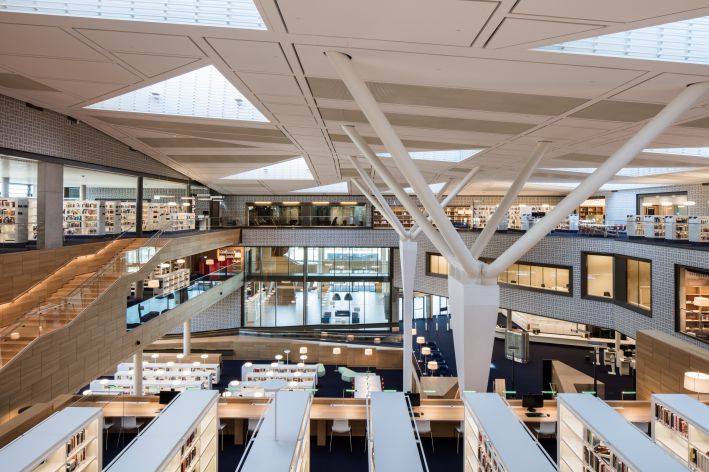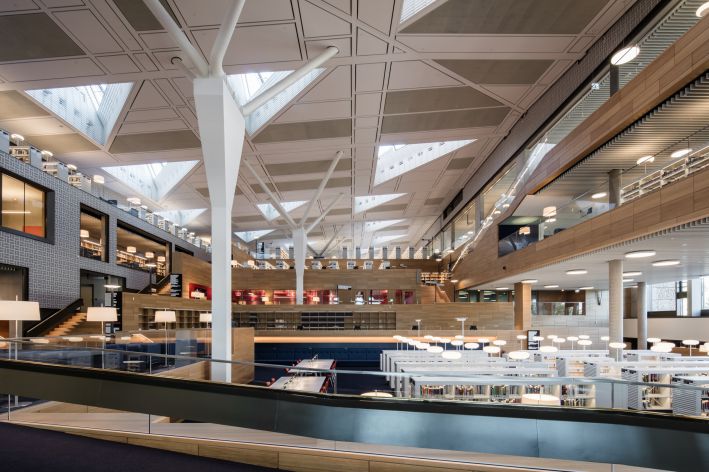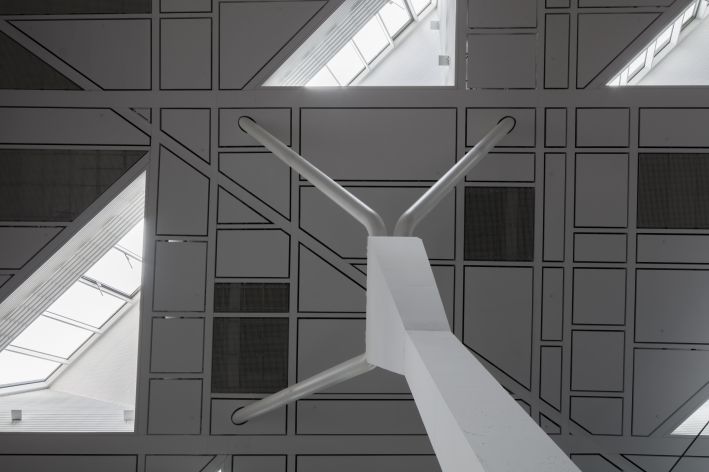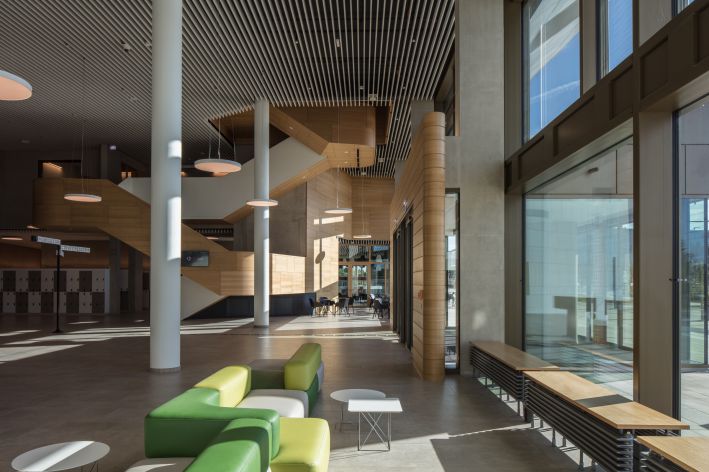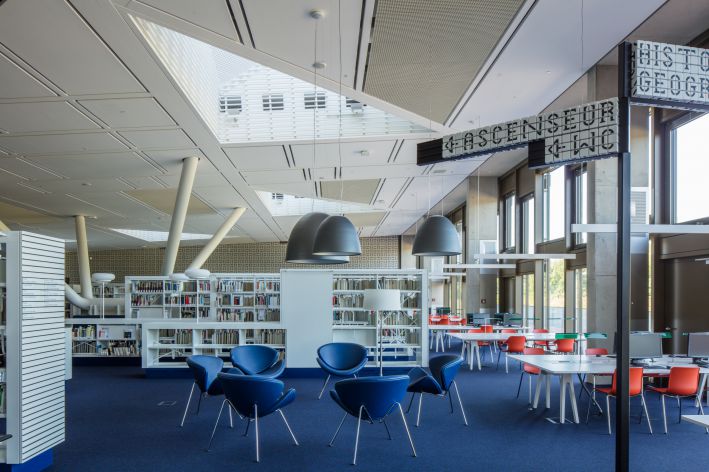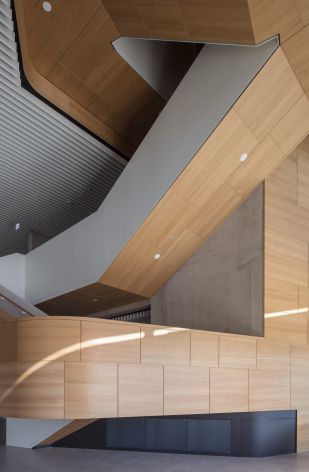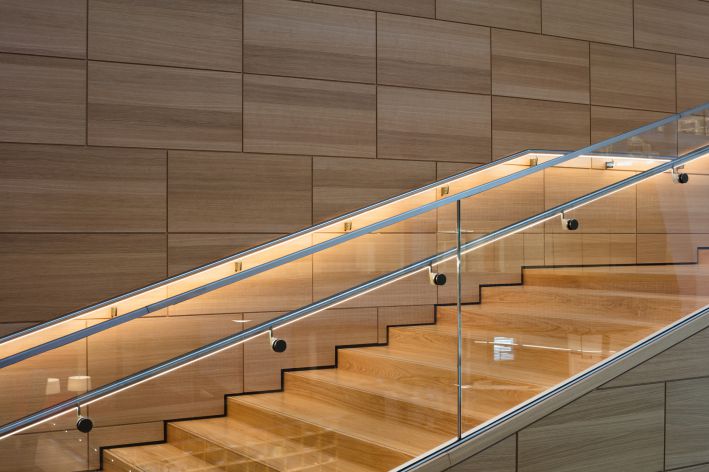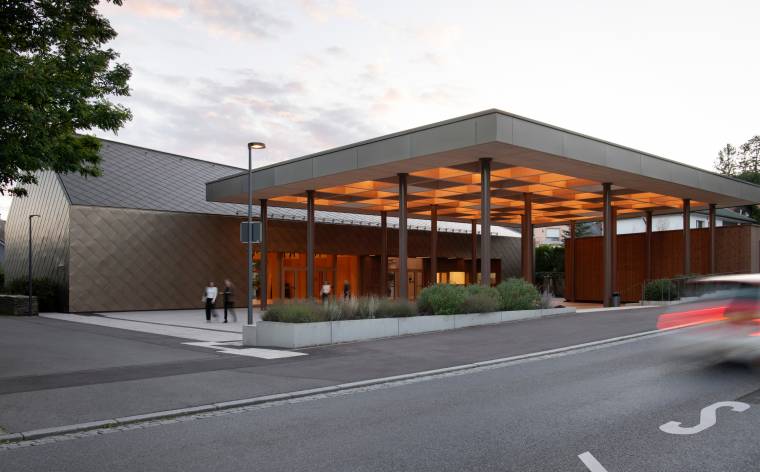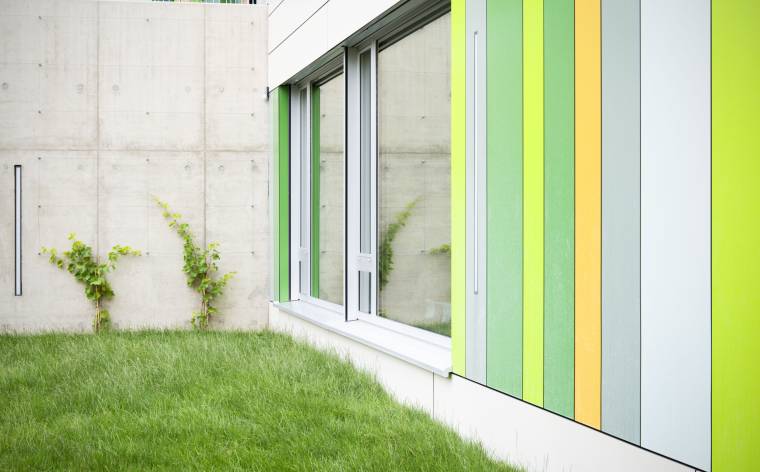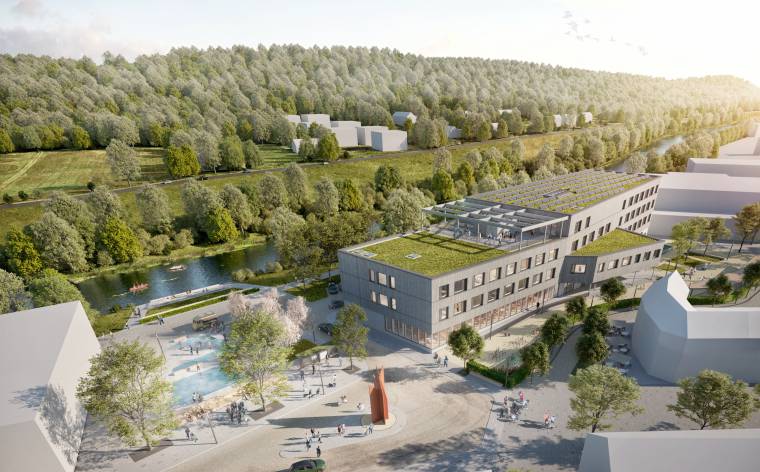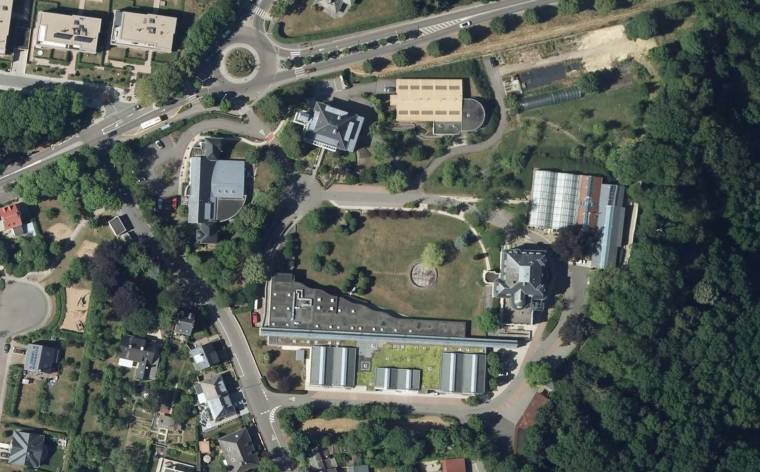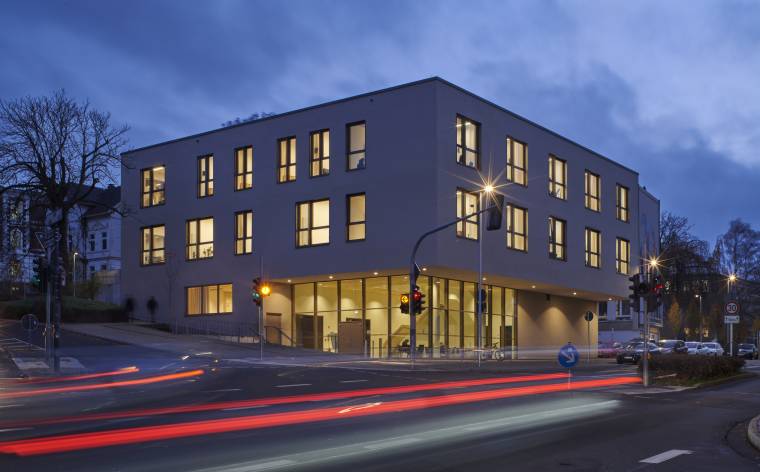Category :
Education + Research + Learning
Project :
Construction of the new Luxembourg National Library in Luxembourg / Kirchberg
Client :
Ministère du Développement Durable et des Infrastructures, Bâtiments Publics
Country :
Luxemburg
Area :
gfa 38.200 m²
Realisation :
03/2014 - 08/2018
Share on
project Construction of the new Luxembourg National Library in Kirchberg client Ministère du Développement Durable et des Infrastructures (LUX), Bâtiments Publics (LUX) architecture / landscape architecture Bolles&Wilson, Berlin/Münster (GER) architecture: execution planning / tendering documents / site supervision WW+, Esch-sur-Alzette/Trier (LUX/GER) structural engineering Schroeder & Associés, Luxembourg (LUX) technical engineering Felgen & Associés, Luxembourg (LUX) energy concept / consultation light architecture EBP Schweiz AG (CH) technical supervisory Socotec, Livange (LUX) national supervisory Luxcontrol, Esch-sur-Alzette (LUX) safety coordinators Argest, Luxembourg (LUX) gfa 38.200 m² nfa 35.300 m² ufa 24.000 m² gv 171.600 m³ total area 1,6 ha net construction costs (installation + arch. + techn.) 63.700.000 € total gross costs 112.171.000 € realisation 03/2014 - 2018
sources: texte & site plan MDDI, photos Christian Richters
The Luxembourg National Library (BnL) is the largest scientific library in Luxembourg and accomodates to over 1.5 million physical documents and an increasing number of digital publications. In its capacity as a heritage library, the BnL houses an essential part of the nation’s collective memory. Via the “legal deposit” system, any publications published in Luxembourg make their way into the BnL, where they can then be accessed by the public.
Establishment and urban planning
The site earmarked for the establishment of the new Luxembourg National Library is located in the Bricherhaff part of Luxembourg’s Kirchberg at the intersection of Avenue J.F. Kennedy and Boulevard Konrad Adenauer. The urban and architectural expression of the BnL aims to counteract the impression of architectural uniformity that characterises this block and to accentuate the entrance to the complex with a building boasting a unique physiognomy in terms of its shape, façade and roof. The shape of the building is such that it forms, at the corner of the two arteries, an elevated section that projects beyond the main cornice by about ten metres, thus fulfilling the function of a landmark and allowing the building to be seen from a distance.
Architecture
The new library building develops itself linearly from its entrance façade, which is both representative and transparent and faces Avenue J.F. Kennedy. The building’s volume is structured into three spatial zones:
• the entrance zone with its two-storey reception area, bordered by the conference room floor. The entrance zone extends towards the consultation areas;
• the intermediary zone with its consultation decks opening towards the outside via the glass façade, facing the landscaped border to the north;
• the “Magasin – Acropolis” zone at the north-west extremity comprising five storage levels in which the heritage collections and archives of the Luxembourg National Library are stored, above which the main reading room is located on level +3. It generously opens out to the treetops of the Grunewald Park.
The composition of the library’s façades is based on a well-defined and differentiated concept, featuring colours and materials in line with the architectonic project’s constraints and the criteria defined in terms of energy efficiency, sustainability and ease of operation. The monolithic structure of the library building is marked by red-tinged large-scale elements in exposed concrete on the outside façade.
The openings, isolated or in a row, are framed by solid high-strength elements in smooth white exposed concrete. The entrance façade, recessed along with the façade of the café, is designed as a two-level curtain wall façade, glazed in its entirety and comprising the double-door entrance. The cantilever, at an angle to the roof, is also clad with exposed concrete elements and creates a large generous eave. The outdoor landscaping of the entrance forecourt, featuring natural stones, is continued straight through to the library’s foyer.
A modern, functional, attractive and durable infrastructure
Secured and air-conditioned depots provide the right storage conditions for the heritage collections: books and periodicals, medieval manuscripts, maps and plans, prints, posters, scores, artist books, post cards. The new reading rooms allow for 300,000 works to be brought out of the shadows of the depots and made directly accessible to the readers. The reading spaces feature an ample number of work stations. Visitors can also enjoy “relaxing” seats, with the library acting as a place of study, reflection, relaxation and distraction through reading all at the same time. An automatic book transport system, operated by a sorting mechanism, will allow readers to return borrowed items 24 hours a day while also streamlining the work of the librarians. An exhibition room, meeting international standards, will finally allow the treasures held by the national library to be showcased. Meeting and education rooms with the right equipment will be available to accommodate pupils and students in the context of the BnL’s educational projects and will facilitate its national coordination missions. The mix of collections, heritage appreciation activities, a space for conferences and seminars as well as a small cafeteria, all of which are currently lacking, will turn the national library into a meeting ground and a place for exchange and debate. The new BnL building will also house the “Bicherbus” service, currently based in Diekirch. It will furthermore accommodate the six sections of the Grand-Ducal Institute and the Société préhistorique luxembourgeoise (Luxembourg Prehistoric Society), and their respective libraries.
Technical and energy concept
The building is characterised by the implementation of key principles that are consistently applied in other State projects, in particular:
• high-performance thermal insulation and air-tightness of the building’s envelope
• sun protection to ensure external thermal loads are kept to a minimum in the summer
• significant thermal inertia to maximise solar and internal gains in winter and to reduce the harmful effects in summer.
Furthermore, a specific innovative and high-quality concept has been developed by aligning the construction, the envelope and the technical installations so as to ensure superior comfort for users while keeping electrical consumption and internal loads to a minimum through highly energy-efficient equipment. The guiding principle consists in providing users with numerous customised options of influencing the thermal comfort, of not allowing any wasted heat loss and of ensuring the building is ventilated and cooled as naturally as possible. The combination of natural and mechanical ventilation allows for superior comfort and a reduction in energy consumption. The motorised and automatic night cooling of the reading spaces occurs naturally by taking advantage of the renewable energy available in the air. A high degree of natural light represents an essential qualitative characteristic of the building and provides an agreeable atmosphere throughout the space while also having a positive impact on energy consumption. Artificial lighting is seen therefore as purely complementary to natural lighting and is secondary to the natural light concept. A high-quality envelope, along with the high thermal capacity of the building’s structure, is the key factor of the energy concept. The energy balance is thus achieved through brief heating or cooling periods and long phases of no additional energy intake. Thanks to a consistent reduction in heating loads and their judicious use, the energy intake within the rooms is reduced to a minimum, which has a positive repercussion not only on thermal comfort but also on energy consumption. In addition to energy efficiency, the use of renewable energies represents a fundamental consideration of the building’s design. The key elements of the concept already cover the energy requirement, primarily through the active and passive use of heat resources available from the environment or the dissipation of the technical installations present in the building and reclaimed in particular from the servers or the mechanical ventilation. Any remaining thermal requirements are met by district heating. Moreover, the technical solutions judiciously chosen are based on a consistent reduction of energy consumption and consequently CO2 emissions. The project is thus characterised by an innovative concept in terms of the use of renewable energy in combination with an energy concept based on the optimal use of the available energy and transfers within the building. In addition, the project boasts a high economic efficiency in view of the investment in measures aimed at reducing energy consumption.
Contact us !
